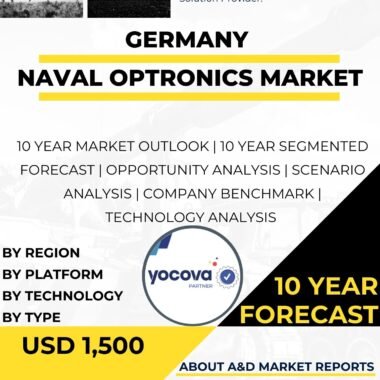Description
Military sensors are integral components of Canada’s defense capabilities, providing critical data and intelligence to the Canadian Armed Forces (CAF) for various applications, including reconnaissance, surveillance, target acquisition, navigation, and threat detection. These advanced sensor technologies play a crucial role in enhancing the CAF’s situational awareness, operational effectiveness, and response capabilities in modern warfare scenarios. As Canada faces evolving security challenges and seeks innovative solutions, the adoption of state-of-the-art military sensors strengthens the country’s defense infrastructure and contributes to its national security objectives.
One of the primary applications of military sensors in Canada’s defense sector is in reconnaissance and surveillance. These sensors, equipped with advanced imaging and data collection capabilities, provide real-time intelligence and situational awareness to military personnel. Ground-based, airborne, and space-based sensors enable the CAF to monitor and analyze activities in various environments, including land, sea, and air domains.
Moreover, military sensors contribute significantly to Canada’s intelligence, surveillance, and reconnaissance (ISR) capabilities in both domestic and international security operations. These sensors are deployed to gather critical information and detect potential threats, supporting counterterrorism, border security, and law enforcement efforts. ISR sensors aid in monitoring and identifying targets of interest, enhancing the CAF’s ability to respond to emerging security challenges effectively.
In addition to reconnaissance and surveillance, military sensors play a vital role in target acquisition and precision strike operations. Advanced targeting sensors, such as radars, infrared sensors, and laser designators, enable the CAF to detect, track, and engage hostile targets with pinpoint accuracy. These capabilities enhance the effectiveness of the CAF’s precision-guided munitions and reduce collateral damage during military operations.
Furthermore, military sensors are used for navigation and guidance purposes. Inertial navigation systems, global positioning systems (GPS), and terrain mapping sensors provide accurate positioning and navigation data to military platforms, including aircraft, ground vehicles, and naval vessels. These sensors enhance the CAF’s ability to operate in complex and contested environments, ensuring mission success and force protection.
The Canadian defense industry actively participates in the development and modernization of military sensors. Collaborations with domestic companies, academia, and international partners facilitate knowledge sharing and technology transfer, positioning Canada at the forefront of sensor innovation.
To ensure the security and reliability of military sensors, rigorous testing and validation processes are employed during their development and deployment. These procedures involve comprehensive assessments of the sensors’ performance, calibration, and resistance to environmental factors and electronic interference.
Ethical considerations are addressed in the use of military sensors, particularly concerning civilian privacy and adherence to international laws and conventions. Safeguarding sensitive information and ensuring responsible use of sensor data are paramount to maintaining public trust and respecting individual rights.
The integration of advanced technologies is an ongoing trend in the Canadian military sensor market. Modern sensors are equipped with enhanced signal processing, data fusion capabilities, and data analytics tools. These advancements improve the accuracy, speed, and efficiency of data acquisition and analysis, supporting rapid decision-making and mission execution.
Furthermore, the use of networked sensor systems enhances the CAF’s overall operational effectiveness. Integrated sensor networks allow for seamless data sharing and coordination among different military assets, enabling more comprehensive situational awareness and operational flexibility.
Military sensors also contribute to Canada’s international defense partnerships. The interoperability of these systems with allied nations fosters cooperation and enhances collective defense capabilities.
Additionally, the Canadian defense industry explores the concept of future sensor technologies, such as advanced machine learning algorithms and adaptive sensor networks. These developments aim to further enhance the CAF’s ability to process and utilize sensor data in dynamic and unpredictable operational environments.
In conclusion, military sensors are crucial components of Canada’s defense capabilities, providing critical data and intelligence for reconnaissance, surveillance, target acquisition, navigation, and threat detection. These advanced technologies enhance the CAF’s situational awareness, operational effectiveness, and response capabilities, supporting decision-making and mitigating risks during military operations. The Canadian defense industry invests in research and development to continually advance military sensor technologies, positioning the country at the forefront of sensor innovation. Rigorous testing and validation processes ensure the security and reliability of these sensors, meeting stringent military standards. Ethical considerations prioritize civilian privacy and adherence to international laws. The integration of advanced technologies, such as enhanced signal processing and data fusion capabilities, further enhances the efficiency and effectiveness of military sensors. Additionally, these systems foster cooperation and interoperability with allied nations, contributing to Canada’s international defense partnerships. As technology continues to evolve, military sensors will remain critical assets in Canada’s defense arsenal, enabling the country to respond effectively to emerging security challenges and safeguard its national interests.




